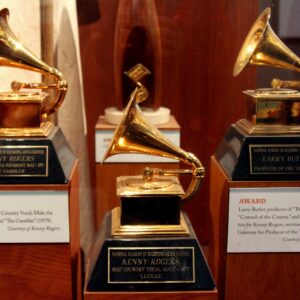This comparative study is set to point out the differences between classical and popular music and to provide the understanding of how the two industries based on the same product of culture can be so distinctly different. The outcome of the research is hopefully going to make the reader familiar with the values of the two mentioned environments. After summarising those two ways of artistic self-development, examples of cross-environmental artists are going to be brought and discussed. Thereof, a set of questions emerges: are the values of each group as noticeable in reality as they are in theory? Is it possible for the musicians to actually cross-over? Will artists associated with a certain genre of music ever have a chance to be valued in the eyes of the audiences of both environments?
CHAPTER ONE: INTRODUCTION
Human is the only creature on Earth that is capable of abstract reasoning. A highly developed brain enables people to communicate with each other by language. Although there are nations speaking incomprehensive dialects there is a universal language that speaks the same in every place of human activity – the culture. Without a doubt, music is one of the most powerful figments of culture. In order to produce merely the least advanced piece of melody oneself and for the own use, no tools are necessary but the human body. Instinctive reaction behaviour of clapping hands, snapping one’s fingers and finally singing prove that music at its rudimentary level has been following in the wake of civilisation from the very start.
Although this language seems universal, it divides into two main “dialects”: classical and popular. Both are based on their own set of values and produce a distinctively different musical material. They have been analysed by the academics and amateurs in order to be once and for all classified. But is it possible for artists to be valued and to oscillate between the two? Or is each sphere metaphorically closed to outsiders? This comparative study of the matter is set to answer the questions in due course of the research.
The choice of the topic was partly determined by the author’s passion for classical music and based on the experiences in a musical field. In the course of popular music studies in England it became clear that the classical training means hardly anything in the commercialised industry. The author – once confident and aspiring to success, found out that her knowledge gained through the years of musical education will not guarantee her a successful position in the popular music world.
As it was previously stated, this study is set to point out the differences that distinguish two musical environments: classical and popular as well as to support and illustrate examples of the theories stated by Theodor Adorno or Matthew Arnold – the mass of mankind will never have any ardent zeal for seeing things as they are; very inadequate ideas will always satisfy them[1].
This dissertation is organised in the following way: the very first chapter will deal with all of the information acquired by the author in a literature field. Methodology chapter, in which research methods that were used and their outcome will be reviewed, will follow the section. Last but one chapter of the essay will enable author’s reflection on the knowledge gained through all forms of research and theories of the scholars will be confronted with its outcome. Finally in the last section, possible conclusions drawn out of this study will be presented.
CHAPTER TWO: LITERATURE REVIEW
As aforementioned, the key aim of this study is to define the boundaries of the classical and popular music on various levels. In order to confront the written word with reality of the music business, it is essential to enumerate some key concepts that build the topic itself. To begin with, several authors emphasise the differences between these two categories of music in their work.
1.1 Music: two spheres
Foundations for the comparison were laid by a German-born musicologist Theodor Adorno, who introduced the concept of two spheres of music: serious[2] and popular. According to his theory, both of the environments should be analysed not from the historical perspective of their development, but a clear judgement between the relation of serious music to popular music can be arrived at only by strict attention to the fundamental characteristic of popular music: standardisation[3], which extends from the most general features to the most specific ones[3]. Different to the common academic belief, Adorno stated that the difference between the spheres cannot be adequately expressed in terms of complexity and simplicity[4] and should be illustrated by analysing the details of particular pieces of music.
1.2 Serious Music
In serious music, each musical element is itself[5] and every detail derives its musical sense from the concrete totality of the piece, which, in turn, consists of the life relationship of the details and never of a mere enforcement of a musical scheme[6]. Moreover, in good serious music the detail virtually contains the whole and leads to the exposition of the whole, while, at the same time, it is produced out of the conception of the whole[7]. Musicologist emphasises that this phenomenon can create thematic dualism and tremendous tension[7] by the level of its composers’ expression. However, the desired effect only through the whole (…) acquire its particular lyrical and expressive quality[6].
On the other hand, Green stated that classical environment immanently ratifies and maintains the dominance of an elite musical institution that (…) is made to seem superior: and it does so by propagating the appearance that there is a musical mass that, along with its profane products, is not very musical[8]. According to him, this environment functions in contrast to popular industry.
1.3. Details of popular music
As far as mass productive and receptive[8] music is concerned, Adorno stated that a scheme of its compositions is fortuitous[7]. Separated details have no impact on a whole, which appears as one densely composed piece that cannot be splitted into details. Accordingly, popular music becomes a caricature of its own potentialities[7].
In such pieces, the details are standardised no less than the form and (…) the most primitive harmonic facts[4]. Because of this simplicity, the attention here is not paid to the musical and lyrical content itself, which appears as pre-given and pre-accepted, even before the actual experience of the music starts: therefore, it is not likely to influence, to any great extent, the reaction to the details, except to give them varying degrees of emphasis[4].
What is more, the author remarks that once a musical or lyrical pattern has proved successful, it is exploited to commercial exhaustion[9]. In this way, popular music will always bring its fans the same feelings which unlike classical would not necessarily cause emotional movement. Adorno emphasises that operations of creating standardised pieces are likely to have a better chance for recognition and favourable reception[4], which would explain the name of sphere itself – popular.
1.4. The nature of listening
Moreover, the musicologist established a theory of a right way of listening to music. According to him, there is not only good music and bad music, there are good and bad modes of listening to music[10]. Another of Adorno’s statements is that popular music listeners listen regressively, indulging oneself in a distracted fetishisation of particulars[10] in opposition to classical concentrated and engaged listening[10]. Contrary, pop keeps the customers in line by doing that listening for them as it were (…), by making them forget what they listen to is already listened to for them, or „pre-digested“[11].
However, not everyone shares Adorno’s statement that classical music remains the only serious and real form of musical culture. Norris in his Music and the Politics of Culture emphasises that classical is neither the sonic form of natural forces, nor a universal language, nor the epitome of human creativity, nor the music to which all cultures aspire[12]. Together with the development of consumer culture, more and more constraints regarding works on classical music can be observed. In reverse though, Martin is happy about the growing academic concerns towards popular music, which branded as long overdue[12].
1.5. Popular music and universality
Universality of popular music is explained by Storey, who analysed its superiority over classical using a political concept of hegemony. The term, established by Marxist philosopher Antonio Gramsci, refers to a condition process in which a dominant class (…) does not merely rule a society but leads it through the exercise of moral and intellectual leadership, (…) in which subordinate groups (…) appear to support and subscribe to values, ideals (…) and cultural meanings which bind them to (…) the prevailing structures of power[13]. The author based his opinion on industry observation and drawn a conclusion that this early political concept is equivalent to growing popularity of commercialised music. Storey defined the industry as one in which the interests of one powerful section of society have been universalised, as the interests of the society as a whole[13]. Moreover, the author indicated that the process of popular music’s constant growth is an outcome of its consumers‘ endeavour and classified popular culture as a result of what men and women make from their active consumption of the texts and practices of the culture industries[14]. By mixing Gramsci‘s political thoughts with his research on popular music industry, observed that the commercially provided culture is redefined, reshaped and redirected to strategic acts of selective consumption[15]. By bringing an example of Bob Marley’s works (articulating beliefs and values of his ethnic group), Storey justified his thoughts of music being articulated in the economic interests of capitalism[15].
To summarise, his theory of popular music’s success leans on its message previously aimed directly at the listener.
1.6. Determinants of taste
To stay within the concept of music trends being a reflection of preferences of the majority, there seems to be consensus on popular sphere being the one in which individuals‘ use of goods conforms to the purposes which have been dreamed up by the advertisers[16]. Featherstone developed the concept of hegemony with a statement that various groups, classes and class fractions struggle and compete to impose their own particular tastes as the tastes[17].
Does it mean that there are groups listening to popular music only and that is why it has dominated over classical industry? Answer to this question lies within the analysis of concepts of Bourdieu, who stated that both culture in the high sense and in the anthropological sense are (…) inscribed on the same social space[18]. By exploring both cultures and their participants towards their lifestyles, Bourdieu noticed that each one represents a different habitus, hence the set of differences, the source of the distinctions and vulgarity of taste[19], which determines their choices of cultural activity. If compared to statistics illustrating a level of education and particular groups’ sources of income, his theory gains a credible tone. With only Great Britain dominated by middle and working class (with combined percentage of 80%), thoughts mentioned by Featherstone would explain a lack of interest in serious music.
According to Silverstone who shared a very similar concept in his work, this situation remains natural, as in this sense an enquiry into the audience should be an enquiry, not into a set of preconstituted individuals (…), but into a set of daily practices and discourses within which the complex act (…) is placed alongside others, and through which that complex act is itself constituted[20]. Joint meaning of these opinions brings their explorers to a conclusion provided by Shepherd in Martin: the significance of a piece of music lies in the ways its internal structure both reflects and creatively articulates the structure of the group or society in which it was conceived[21].
1.7. Music: a lifestyle’s reflection
Studies of Bordieu and Silverstone show that the concept of difference between the two spheres of music can be analysed from a sociological point of view. According to Martin, composers, performers and listeners are all (…) socialised in certain cultural concepts[22], which allow them to think and work in ways recognisable to social environments they belong to. Yet again, it is essential to mention Adorno who identified socio-psychological function of popular music as a provider of psychical adjustment to the mechanisms of present-day life[23]. Unlike him, many believe that this impact distinguishes both musical environments and brings benefits to popular expressly.
According to Whannel and Hall, only unsophisticated music mirrors attitudes and sentiments which are already there, and at the same time provides an expressive filed and a set of symbols through which these attitudes can be projected[24]. It has the ability to establish social identity amongst youth and invoke the need to experience life directly and (…) dramatise authentic feelings[24]. In simplest words, popular music becomes valuable because it speaks of the people who create it and of the social environment from which it comes. As mentioned by Whannel, it expresses contemporary attitudes by enabling everyone to express themselves and create a trend of emotional realism[24].
1.8. Arousal potential
Remaining within the socio-psychological approach, Berlyne proposed a theory based on links between psychological and aesthetic attitudes to music. The psychology professor classified music as a stimulus which impact on the human mind is determined by its level of arousal potential[25]. Accordingly, the music’s significance is directly proportional to its stimulating values which Berlyne divided into three: psychophysical (volume and tempo), ecological (`meaningfulness`) and collative (complexity)[25]. During his study it emerged that everything that stimulates a person is a reflection of those experienced in the past. The definition above indicates that music with an intermediate degree of arousal potential is liked the most, and this degree of liking gradually decreases towards the extremes of arousal potential[25]. This theory can be in a comprehensive way illustrated by an inverted-U curve and connected with Wundt curve, expressing the relationship between musical familiarity and liking.
Berlyne’s view was also researched by Thomas Eerola in an unpublished study, mentioned in Hargreaves and North. Eerola pictured the 1971 concept by calculating the arousal potential of The Beatles discography and measuring the public‘s response to individual albums. Overall complexity of LPs compared to the charts position worked as clear evidence that pop listeners do not search for music rich in value.
Although the concept of this relationship stays to be considered as an individual matter, discrepancies between the two key factors vary depending on the industries. Initially mentioned sets of values characterising classical and popular environments would create different levels of stimuli if presented to the public. In words of Rosselson in Gardner, auditions passively consume what is given to them[26].
1.9. Two spheres of music: economical differences
The last section of this chapter is going to demonstrate how the two spheres of music are nowadays unequal when it comes to economical approach. To quote Rosselson, more than any other performing arts, the world of song is dominated by the money men[26]. Accordingly, the industry creates the illusion that a song is a freely available commodity (…). The reality is that a song is the private property of business organisation[26].
Although in the case of classical against pop, the comparison is always to show the banality of pop[27], its profitable value remains beyond dispute. What is going to be proved in a next chapter of this study, priorities of classical industry are the reason why its artists abandon their native environment in search for the financial development in the popular sphere. The sad example of shrinking power of the classical industry sets out to show how different ways of financing and organising cultural production have traceable consequences for the range of discourses and representations in the public domain and for audiences‘ access to them[28].
While commercialised industry invest in promotion and in finding new way of making music accessible, serious sphere seems to be based on one fixed factor – musical education.
Hallam and Prince mentioned in Hargreaves and North conducted a study which outcome was that musical ability is (…) something that is learned or developed. Less encouragingly though, the amount of practice required means that the road to musical glory is long and steep[29].
1.10. The environmental autonomy
Although musical education creates possibilities of self-development, it is also considered as a cause of classical industry’s autonomy. Studies of Hargreaves show that people with high levels of training seem to prefer more complex music than do people with low levels[29] and should need to be exposed to a greater degree of musically-evoked arousal than would others in order to achieve a moderate level of arousal[29]. Moreover, his research evaluated that listeners prefer the song that sounds most like the music he or she is usually exposed to[29]). If connected to the practices of musical education, it is acceptable to state that classical musicians and pop listeners would hardly switch their sides when it comes to enjoyment of particular genre of sound. Those clear differences lead to the situation described by Frith and acknowledged in Hargreaves and North, where that sociocultural mores extend to the performers‘ behaviour and vary over time[29]. To bring an example brought by Hargreaves et al. in Social and Applied Psychology of Music, pop music artists communicate with their audience and encourage them to become a part of their show. In case of classical music, such behaviour would be classified as rude and inappropriate.
As Chapter Two illustrated, Adorian concept of the two spheres of music appears to act as a base for any other further comparative study. Thereof, a set of questions relying on the concepts mentioned earlier in this essay emerges: are the values of each group as noticeable in reality as they are in theory? Is it possible for the musicians to cross-over? Will artists associated with a certain genre of music ever have a chance to be valued in the eyes of the audiences of both environments?
c. d. w części II
——————————-
[1] Arnold, M. The function of criticism at the present time (1865) cited in Storey (2009) p. 4.
[2] Adorno, T. On Popular Music (1941) cited in Frith (1990) p. 301.
[3] Adorno, T. On Popular Music (1941) cited in Frith (1990) p. 302.
[4] Adorno, T. On Popular Music (1941) cited in Frith (1990) p. 302.
[5] Adorno, T. On Popular Music (1941) cited in Frith (1990) p. 305.
[6] Adorno, T. On Popular Music (1941) cited in Frith (1990) p. 303.
[7] Adorno, T. On Popular Music (1941) cited in Frith (1990) p. 304.
[8] Green, I. How popular musicians learn: a way ahead for music education (1988) cited in Martin (1995) p. 33.
[9] Adorno, T. On Popular Music (1941) cited in Frith (1983) p. 197-8.
[10] Witkin, R. Adorno on Music (2000) p. 181.
[11] Adorno, T. On Popular Music (1941) cited in Frith (1983) p. 201.
[12] Norris, D. Sound and society: themes in the sociology of music (1989) cited in Martin (1995) p. 9.
[13] Storey, J. (2003) Cultural Studies and the Study of Popular Culture p. 124.
[14] Storey, J. (2003) Cultural Studies and the Study of Popular Culture p. 126).
[15] Storey, J. (2003) Cultural Studies and the Study of Popular Culture p. 127.
[16] Featherstone, M. (2007) Consumer Culture and Postmodernism p. 86.
[17] Featherstone, M. (2007) Consumer Culture and Postmodernism p. 87.
[18] Bourdieu, 1984, cited in Featherstone, 2007, p. 88.
[19] Featherstone, M. (2007) Consumer Culture and Postmodernism p. 89.
[20] Silverstone, 1994, cited in Storey, 2003, p. 70.
[21] Shepherd, 1987, cited in Martin, 1995, p. 79.
[22] Martin, 1995, p. 113.
[23] Adorno, T. On Popular Music (1941) cited in Frith (1988), p. 206-7.
[24] Whannel et al. 2008, cited in Storey, 2008, p. 63.
[25] Berlyne, 1971, cited in Hargreaves et al. 2008, p. 77.
[26] Rosselson, 1979, cited in Gardner, p. 41.
[27] Storey, J. (2003) Cultural Studies and the Study of Popular Culture p. 118.
[28] Golding et al. 1991, cited in Gurevitch et al., p. 15.
[29] Hargreaves, D. and North, A. (2008) The Social and Applied Psychology of Music p. 55.
















